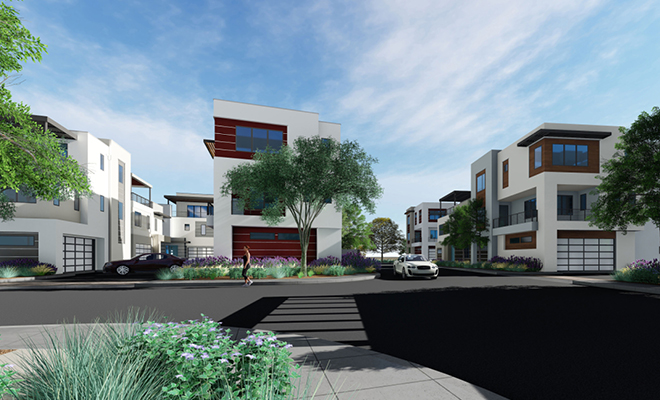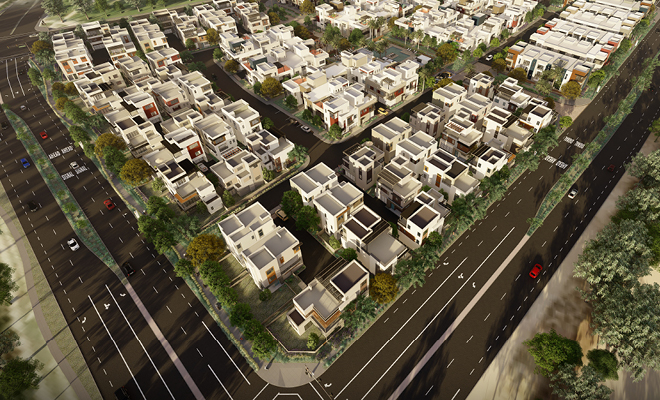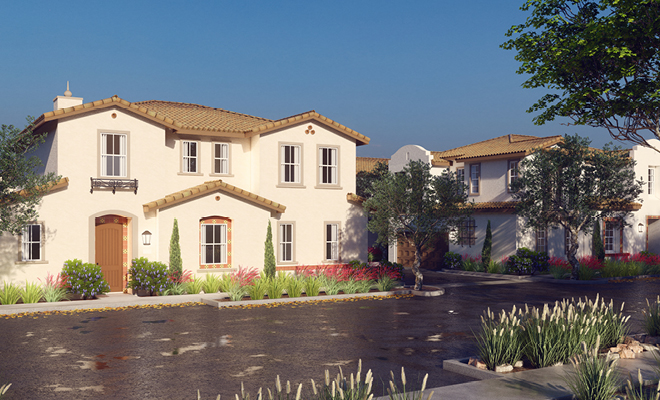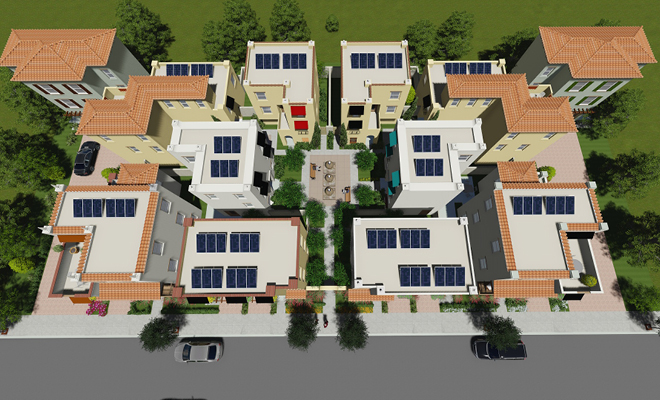Versatility in Cluster Housing

Looking to the future, architects and designers are responding to the call to create more sustainable and attainable products for various buyer profiles. Within master planned communities, cluster homes are a segment that has evolved and is currently on the rise, especially within California markets. Cluster homes present a solution to maximize land usage and minimize footprints, while maintaining the advantages of single-family, detached homes.
Building on our 2015 blog, court-style living today continues to use a grouped or “cluster” module of homes that share a common driveway or alleyway. The group of homes maintain conventional front exterior elevations along public streets, oriented around focal access points, and surrounded by shared natural elements like green spaces and parks. Enhancements in cluster home designs include pocket yards, valued for their privacy and seamless transition between indoor and outdoor spaces; third-floor options for additional space and a dynamic street scape; and bedroom suites on the ground floor, adding flexibility through a multi-generational component. These features have become increasingly popular in floor plans as we try to fit into limited spaces, but also prioritize privacy and spaciousness.
Following are recent WHA designed cluster products that are disrupting the market:

Icon at Levity by Lennar
These detached cluster homes have been designed with a sophisticated, urban theme. The cluster formation is encircled around an auto court, and each home contains a two-car garage facing the shared driveway. The design includes additional building articulation through the use of recessed garage doors, elevated third stories, and variations in roof lines to articulate the homes. The four innovative floor plans incorporate pocket yards, balconies, and expansive rooftop decks, enhancing the spacious quality of the homes.

Cassis at Rancho Soleo by Tri Pointe Homes
A fresh take on an auto-court configuration, the homes feature authentic, Spanish detailing that make the homes appear large from the street side. The cluster of homes are arranged with garages and front doors facing a central stub street. Pocket yards and balconies form seamless integration of indoor and outdoor spaces, enhancing square footage and the architectural style. Windows and doors were intentionally placed to enhance volume and privacy for residents. The exterior-facing units maintain traditional street character, while the interior units have more privacy and enhanced entry statements to create a welcoming presence at their internal location.

Garden Cluster Prototype
WHA’s R&D studio, “WHAt’s Next”, envisioned a less-car-dependent future and explored a new paradigm for garden cluster units. It was achieved through consolidated one-car garages along the frontage and exterior auto courts, with homes set in a shared, courtyard setting. These three-story homes range from 1,907 – 2,669 SF and provide access to a Mediterranean courtyard that serves as a lifestyle extension of the homes. Conventional elevations were developed for homes facing the public street with porches and covered entries facing the green court.
The versatility of cluster homes adds a segment of housing attractive to developers and home buyers looking for affordability, amenity and lifestyle. Trends suggest these detached residences are ideal for infill sites, as well as viable modular design for new communities.




Leave a Reply